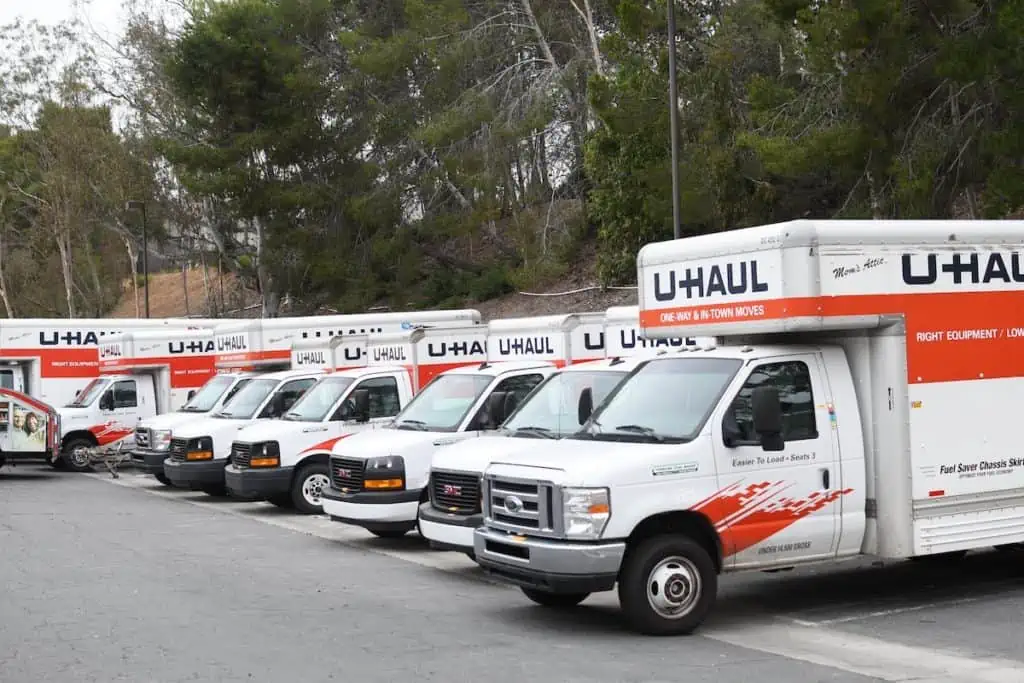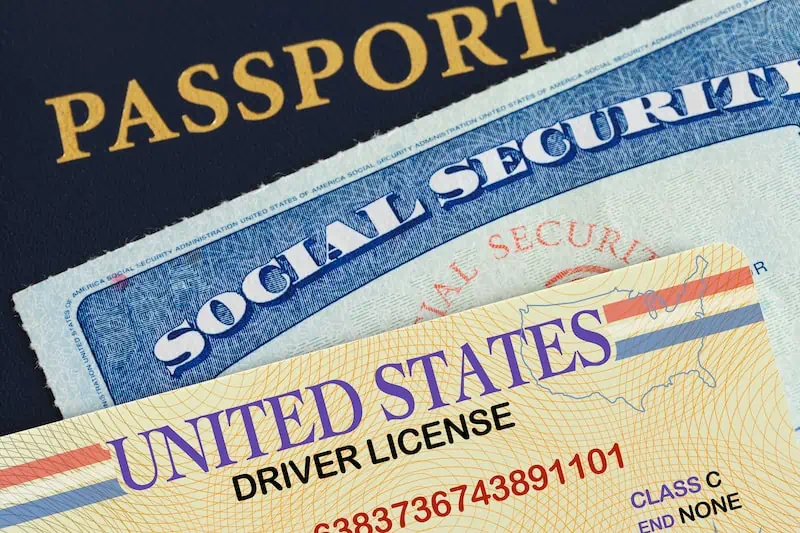If you’re relocating to another state, it can be tough to manage the packing, organizing, and administrative steps involved in moving, given the unknowns of your new state.
Fortunately, you can cut down on the confusion (not to mention the time, money, and hassle) if you know what to expect ahead of time and take proactive steps. Luckily, that’s what this article is all about!
Steps To Take When Moving to Another State
1. Decide if full-service or DIY is best for your long-distance moving services
Cost or convenience? While those are your two major options, there are a lot of ways to achieve both.
For example, if you want to leave the heavy lifting and driving to someone else, hire professional movers. Of course, this option will be more expensive. If instead you want to go the in-between route, cost-wise, you can also hire movers to just load and unload the truck for you, and then drive yourself to your new location to save a lot of cash.
Also, keep in mind that moving container companies are another option to potentially consider, especially if you’ll be in between moves for a while. With this solution, you’re in charge of packing and loading the container yourself, although you can hire professional movers to help you with the heavy stuff if you need to.
2. Research the best long-distance moving services for your specific journey
If you aren’t sure about the above, here’s another way to look at it: whether you’re hiring a moving company, driving a rental truck, or going with a shipping container, the distance you’re moving will make a big difference in your options.
“If you’re making an interstate move, you’ll need to register your car with your new state’s DMV as well. Each state offers a grace period to update your registration, typically between 30 to 90 days.”
For example, some companies only do local moves, which usually means a distance of 100 miles or less. If you’re moving within your state but several hundred miles away (known as an “intrastate move”), you’ll need to budget for higher moving costs and find a company specializing in longer distances.
Moving across several states (known as an “interstate move”) or cross-country moving will be the most expensive option and require a company that has a national presence.
3. Budget super early when moving to another state
How much money should you save to move to another state?
The answer varies. The American Moving and Storage Association estimates that the average cost of an interstate household move is about $4,300, while the average cost of an intrastate move is about $2,300.
Whatever the costs, make sure to set aside time to save up the money you need so you don’t end up with a lot of credit card debt once all is said and done.
Moving far away?
Do it cheaper.
HireAHelper.com can save you up to 40%, compared to traditional interstate van lines.
Compare our long distance moving company options.
4. Ask your employer about relocation assistance
Are you moving out of state to take a new job? If so, your employer may offer out-of-state relocation assistance and help cover expenses such as moving company costs, storage, temporary housing, and more. While moving costs can add up for an employee, it’s an investment some companies are willing to make for the right talent.
To find out if this is a benefit your company offers, reach out to your Human Resources department.
5. Find out if your new place has any restrictions for pets or plants
You don’t want to run into any trouble getting your fur babies or precious plants to their new home. Some states, such as California and Hawaii, have strict rules around transporting plants and animals. Be sure to know what’s considered illegal and prepare accordingly.
Hint: You can start with your destination state’s website (look for a “.gov” in the url).
6. Consider the season you’re moving in
If you can help it, you don’t want to spend all day unloading your belongings at the height of summer in Arizona or during hurricane season in Louisiana. Research the climate for your new home and plan the move for when the weather should be mild.
You can look up your destination on a site like Climate-Data.org, which contains a ton of data about the average monthly temperature, precipitation, and more for cities around the world.
7. If possible, visit your new hometown at least once
If you’re moving to a new city or area you’re not familiar with, it’s a good idea to spend some time in the area and check it out before pulling the trigger on a move there. You’ll want to see what the neighborhood is like, including what types of shops and restaurants are nearby, how your neighbors are, walkability, etc.
And hey, if you can’t make a trip before the actual move, do yourself a favor and at least look around with Google Maps.
8. Consider making a fresh start in your new state
A fresh start might be exactly what you need — but it’s also scary!
How do you move to another state and start over? First off, reframe the situation as an opportunity. The lack of familiar faces or a sense of belonging can potentially be overwhelming, but the good news is that you’re in total control.
“…if you moved to another state during the year (or otherwise lived in one state and earned income in another) you might need to file more than one [tax] return.”
Look for social groups, sports clubs, art collectives, or other groups that align with your interests. Hit a photography meet-up. Join a run club. Go out to local establishments and introduce yourself to people.
But remember, starting over isn’t just about meeting people. It’s also your chance to build new routines and habits. Have you always wanted to get up early and work out? Here’s your opportunity.
9. Get your packing supplies well ahead of time
Make sure you have all the necessary supplies handy for properly packing your belongings, and keep extra on hand just in case. You don’t want to have to run out in search of boxes or tape while you’re in the middle of packing.
Also, consider any specialized supplies you may need, such as wardrobe boxes, hangers, bubble wrap, box knives, permanent markers, and dollies.
To save money on these items, see if anyone has cheap or free moving boxes on sites such as Facebook Marketplace, Craigslist, or Nextdoor, or check with local businesses.
10. Set aside 6 to 12 hours to pack, per room
Packing will take longer than you think. If you hire professional movers to pack up and load your belongings, you can probably expect it to get done in a day. A two-bedroom home, for example, requires about six to 12 hours, assuming there’s a two-person crew.
If you’re doing your own packing, you’ll probably need much more time, though — think two to three days for the same two-bedroom. Unless you’re able to squeeze in your packing over one weekend, you might need to request time off of work to allow enough time.
11. Figure out your new place’s moving policies
Some apartment buildings and other planned communities have strict rules around moving. For example, you may not be allowed to block certain streets or driveways, or take up the elevators for too long.
Be sure to know these policies beforehand so you can plan around them. To find out, contact your building’s property manager or head of the homeowners association.
12. Get your utilities transferred
The last thing you want is to show up to your new place and have no water or electricity.
First, research the options available in your new city to set up a new service. Once you’ve selected the provider, it’s a good idea to get the ball rolling at least two weeks before your move. Keep in mind that for some utilities, such as electricity, the service provider may need to run a soft credit check and/or require a deposit to approve your account.
The Most Trusted Moving Checklist on the Web
13. Cancel or transfer any memberships
Belong to a gym or club? Many require at least one month’s notice before you cancel your membership, so be sure to get this done well before you move. If the organization has a location in the city you’re moving to, you may be able to transfer the membership instead.
14. Have your child’s school records transferred, too
If you have kids, you must notify their school of the move. Be sure that their school records, along with other important records such as health information and immunizations, get transferred to the new school.
While you should be able to bring photocopies of these documents when you register them at their new school, you’ll eventually need to supply official, sealed copies of their transcripts, which include report cards and standardized test results.
15. Research transferring your professional license
How do you legally move to another state? If you work as a doctor, dentist, lawyer, or other licensed professional, you may need to transfer your license or apply for a new one if you’re moving to a different state.
The process for transferring your license will depend on your state and profession. Some states have reciprocity agreements or other arrangements to help ease the process, but you should contact your state licensing board as soon as possible to ensure you have enough time.
16. Update your driver’s license or ID within two weeks
Most states require you to get a new license within two weeks of relocating. You’ll need to book an appointment with your local Department of Motor Vehicles and bring along some paperwork, including your current license, additional identification (such as your Social Security card or passport), proof of residence (such as a utility bill or W-2), and payment.
Be sure to book your appointment in advance since slots tend to fill up quickly. You can find your local DMV office using this directory.
17. Update your vehicle registration and insurance
If you’re making an interstate move, you’ll need to register your car with your new state’s DMV as well. Each state offers a grace period to update your registration, typically between 30 to 90 days.
Most states also require proof of insurance to register your car, so sign up for a new policy if you’re unable to remain with the same insurer (and don’t cancel your old one until you do) before registering.
“…the average cost of an interstate household move is about $4,300, while the average cost of an intrastate move is about $2,300.”
Along with your new ID and proof of insurance, you’ll need proof of residency and your car’s title. Keep in mind that some states, including California and Georgia, charge a tax to register your vehicle that’s based on its market value. It’s especially important to plan for this added expense if you have a newer car or luxury vehicle.
18. Utilize car shipping services if necessary
If you’re not driving your own vehicle to the new location, you’ll need to have it shipped. Some moving companies will ship your car along with your belongings, but you may be able to save some money by hiring a company that specializes in shipping cars. Your vehicle’s size and condition, the distance being shipped, and the type of carrier will all factor into the price.
One of the biggest decisions to make is whether to go with open or closed transport; it’s probably better to go with a closed container if you have a newer or luxury vehicle, although the cost can be as much as 60% higher. Be sure to get several quotes before choosing a car shipping company.
19. Contact your banks and lenders
Make sure you don’t miss any important payments — let your bank, credit card company, student loan servicer, and any other financial institutions know that you’ve moved and give them your new address. You may be able to do this by simply logging into your online banking platform, or by calling the number on your card or statement.
20. Set up mail forwarding
To make sure you don’t miss any important mail in the transition, have your mail forwarded by the USPS starting a few days before your move. Don’t forget to update your new mailing address for any mail subscriptions, too.
Make sure you don’t miss any important payments — let your bank, credit card company, student loan servicer, and any other financial institutions know that you’ve moved and give them your new address. You may be able to do this by simply logging into your online banking platform, or by calling the number on your card or statement.
21. Register to vote
Don’t forget your civic duty during your move! Check Vote.gov to find instructions for registering to vote in your new state.
22. Get a handle on taxes
Finally, one aspect of moving that you may not have considered but can impact your finances quite a bit, is the state income tax. Some have a flat tax, meaning everyone pays the same tax rate. Others have a progressive tax system, which means you pay a higher tax rate on higher amounts of income. And a handful don’t charge income tax at all.
Here’s the latest available breakdown of state tax rates as of 2020:
[table id=1 /]
Keep in mind that if you lived and worked in the same state all year, you only need to file one state return. However, if you moved to another state during the year (or otherwise lived in one state and earned income in another) you might need to file more than one return.
Moving to Another State: Takeaway
Is it hard to move to another state? Sure, it can be. Relocating means juggling logistics, paperwork, and settling into a new environment. But as the saying goes, “If you fail to plan, you plan to fail.” By remembering the steps above and using the right moving help, you can make your move as smooth as possible.






